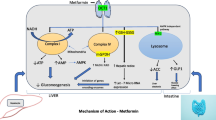Abstract
A pharmacogenetic predisposition to thalidomide-induced neuropathy has been investigated. Differences of drug metabolism were examined in 16 patients with severe orogenital ulceration, who were treated with thalidomide (≤200 mg/day) for 0.3–5.0 years. Eight had evidence of early peripheral neuropathy according to nerve conduction studies. Rates of C-hydroxylation, N-acetylation, and conjugation reactions with sulphate, glucuronide and glycine, were tested with the probe compounds debrisoquine, sulphadimidine, paracetamol and aspirin, respectively. Urinary drug metabolites were analysed by high pressure liquid chromatography. Results were compared with 16 healthy age- and sex-matched volunteers.
Of the patients 6.25% and 13.3% of the controls had a poor Debrisoquine Hydroxylator Ratio (DMR); none of the patients with neuropathy had a poor DMR as compared to 12.5% without neuropathy. Of the patients 40.0% and 35.7% of the controls were slow acetylators; 28.6% with neuropathy were slow acetylators as opposed to 50% without neuropathy. Similarly, there were no significant differences in rates of conjugation between groups. All unaffected patients were active smokers, whereas only two of those with neuropathy smoked. Cumulative dose or duration of therapy were unrelated to risk of neuropathy.
In conclusion, changes of nerve conductivity are a frequent and unpredictable adverse effect of thalidomide (≤200 mg/day), although smoking may have a protective action against their development. Nerve conduction studies are required before and during treatment, irrespective of the prescribed dose.
Similar content being viewed by others
References
Sheskin J (1965) Thalidomide in the treatment of lepra reactions. Clin Pharmacol Ther 6:303–306
Barnhill RL, McDougal AC (1982) Thalidomide: use and possible mode of action in lepromatous leprosy and in various other conditions. J Am Acad Dermatol 7:317–323
Grosshans E, Illy G (1984) Thalidomide therapy for inflammatory dermatoses. Int J Dermatol 23:598–602
Saurat J-H, Camenzind M, Helg C, Chapus B (1988) Thalidomide for graft-versus-host disease after bone marrow transplantation. Lancet I:359
Jenkins JS, Allen BR, Maurice PDL, Powell RJ, Littlewood SM, Smith NJ (1984) Thalidomide in severe orogenital ulceration. Lancet II:1424–1426
Youle M, Clarbour J, Farthing C, Connolly M, Hawkins D, Staughton R, Gazzard B (1989) Treatment of resistant aphthous ulceration with thalidomide in patients positive for HIV antibody. Br Med J 2:687–689
Miller AJ, Cunliffe WJ (1984) The management of cystic, conglobate and severe acne irresponsive to systemic antibiotics with roaccutane. In: Cunliffe WJ, Miller AJ (eds) Retinoid therapy. MTP Press Limited, Lancaster, p 364
Wulff CH, Høyer M, Asboe-Hansen G, Brodthagen H (1985) Development of neuropathy during thalidomide therapy. Br J Dermatol 112:475–480
Evans DAP, White TA (1964) Human acetylation polymorphism. J Lab Clin Med 63:394
Shah RR, Oates NS, Idle JR, Smith RL, Lockhart JDF (1982) Impaired oxidation of debrisoquine in patients with perhexilene neuropathy. Br Med J 284:295–299
Mahgoub A, Idle JR, Dring LG, Lancaster R, Smith RL (1977) The polymorphic hydroxylation of debrisoquine in man. Lancet II:584–586
Steventon G, Williams AC, Waring RH, Pall HS, Adams D (1988) Xenobiotic metabolism in motorneuron disease. Lancet II:644–647
Hess CW, Hunziker T, Küpfer A, Ludin HP (1986) Thalidomide-induced peripheral neuropathy. A prospective clinical, neurophysiological and pharmacogenetic evaluation. J Neurol 233:83–89
Eriksson SO, Jakobsson M (1973) Synthesis and alkaline hydrolysis of some N-substituted phthalimides. Acta Pharm Suec 10:63–74
Olson JA, Moon RC, Anders MW, Fenselau C, Shane B (1992) Enhancement of biological activity by conjugation reactions. J Nutr 122 [Suppl 13]:615–624
Varley H, Gowenlock AH, Bell M (1979). Practical clinical biochemistry. Vol. 2. Heinemann, London pp 346–350
Westwood BE, Harman PJ, Mashford ML (1986) Liquid chromatographic assay for debrisoquine and 4-hydroxy debrisoquine in urine. J Chromatogr 374:200–203
Aguilar MI, Hart SJ, Calder IC (1988) Complete separation of urinary metabolites of paracetamol and substituted paracetamol by reversed-phase ion-pair high-performance liquid chromatography. J Chromatogr 426:315–333
Steventon GB, Heafield MTE, Waring RH, Williams AC, Sturman S, Green M (1990) Metabolism of low-dose paracetamol in patients with chronic neurological disease. Xenobiotica 20:117–122
Shen J, Wanwimolruk S, Roberts MS (1991) Novel direct high-performance liquid chromatographic method for determination of salicylate glucuronide conjugates in human urine. J Chromatogr 565:309–320
Fullerton PM, Kremer M (1961) Neuropathy after intake of thalidomide (Distaval). Br Med J 2:855–858
Cohen S (1968) Thalidomide polyneuropathy: a clinical electrophysiological and histological follow-up study. J Neurol Neurosurg Psychiatry 31:543–551
Chen T-L, Vogelsang GB, Petty BG, Brundrett RB, Noe DA, Santos GW, Colvin OM (1989) Plasma pharmocokinetics and urinary excretion of thalidomide after oral dosing in healthy male volunteers. Drug Metab Disposit 17:402–405
Aronson IK, Yu R, West DP, Van Den Broek H, Antel J (1984) Thalidomide-induced peripheral neuropathy. Effect of serum factor on nerve cultures. Arch Dermatol 120:1466–1470
Heger W, Klug S, Schmahl HJ, Nau H, Merker HJ, Neubert D (1988) Embryotoxic effects of thalidomide derivatives on the non-human primate Callithrix jacchus; 3. Teratogenicity potency of the EM12 enantiomers. Arch Toxicol 62:205–208
Leonard MS (1991) Clinical pharmacology through the looking glass: reflections on the racemate vs enantiomer debate. Br J Clin Pharmacol 31:623–626
Grant DM, Morike K, Eichelbaum M, Meyer UA. Acetylation pharmacogenetics (1990) The slow acetylator phenotype is caused by decreased or absent arylamine N-acetyltransferase in human liver. J Clin Invest 85:968–972
Evans DA (1989) N-acetyltransferase. Pharmacol Ther 42:157–234
Meyer UA, Skoda RC, Zanger UM (1990) The genetic polymorphism of debrisoquine/sparteine metabolism-molecular mechanisms. Pharmacol Ther 46:297–308
Scadding GK, Ayesh R, Brostoff J, Mitchell SC, Waring RH, Smith RL (1988) Poor sulphoxidation ability in patients with food sensitivity. Br Med J 297:105–107
Wright A, Ryan FP, Willingham SE, Holt S, Page AC, Hindle MO, Franklin CD (1986) Food allergy or intolerance in severe recurrent aphthous ulceration of the mouth. Br Med J 292:1237–1238
Author information
Authors and Affiliations
Rights and permissions
About this article
Cite this article
Harland, C.C., Steventon, G.B. & Marsden, J.R. Thalidomide-induced neuropathy and genetic differences in drug metabolism. Eur J Clin Pharmacol 49, 1–6 (1995). https://doi.org/10.1007/BF00192350
Received:
Accepted:
Issue Date:
DOI: https://doi.org/10.1007/BF00192350




